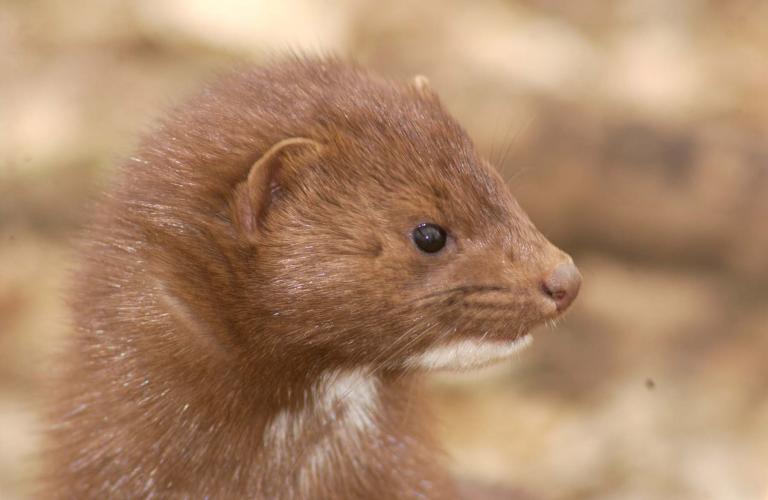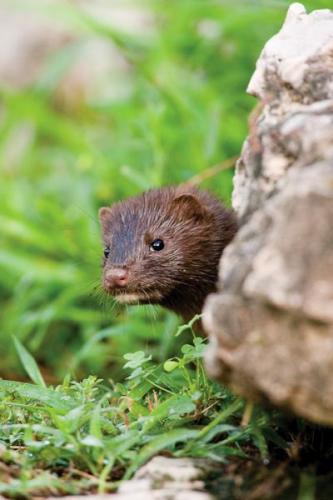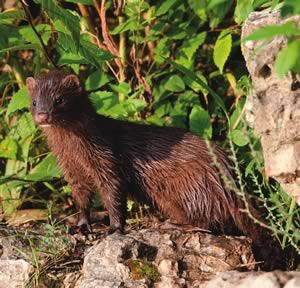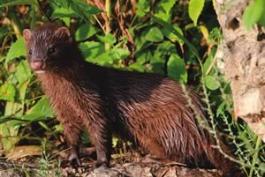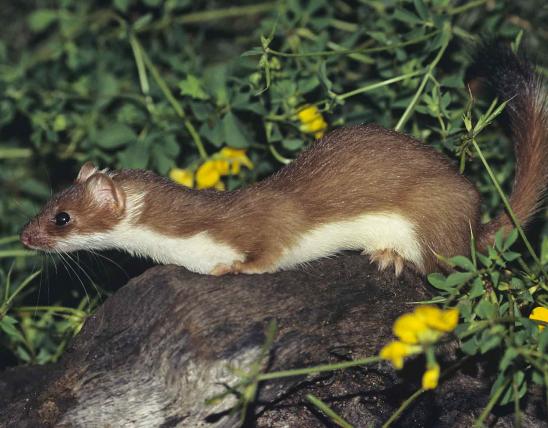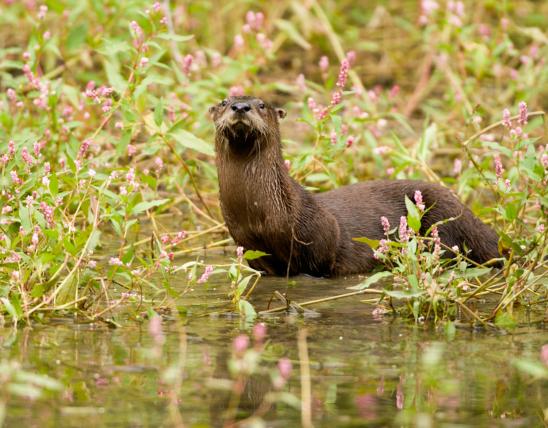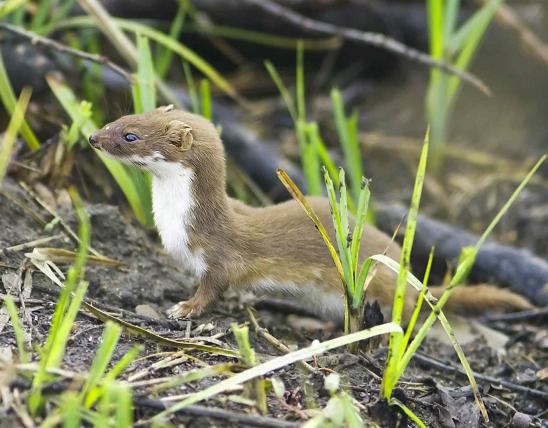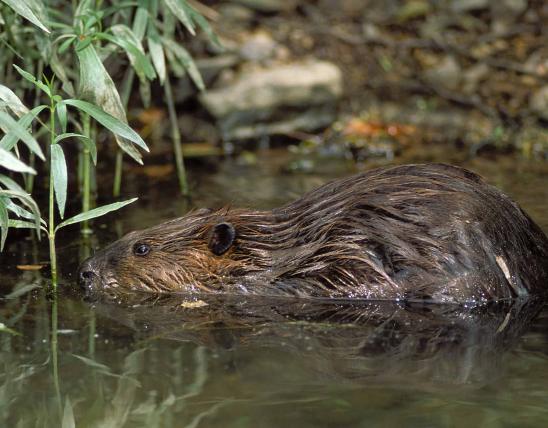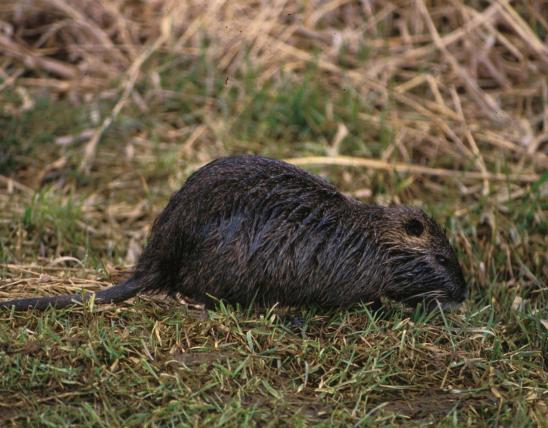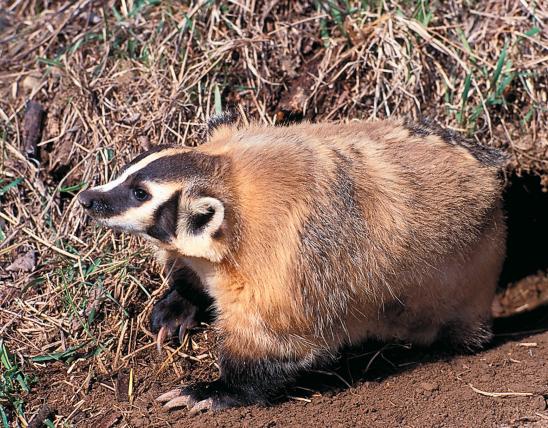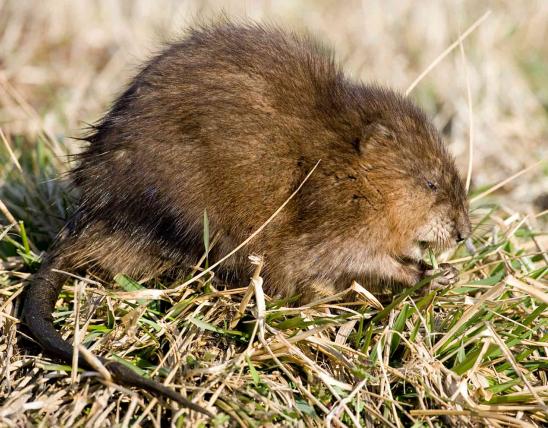
Adult American minks are almost entirely brown, with a white chin and with white spots occurring irregularly on the throat, chest, and belly. Males are larger than females. Males reach 27 inches long and 3 pounds while the largest female may be only 21 inches long and 2 pounds. A mink's tail is not like an otter's (it is not obviously thick at the base, nor is it flat on the bottom, nor does it obviously taper from the body toward the tip). There is only a short web between the toes.
Musk glands in the anal region secrete a strong odor considered by many to be more obnoxious than that of either weasel or skunk. This odor is given off particularly during the breeding season but also at any period of intense excitement.
Similar species: In our state, minks are most likely to be confused with the long-tailed weasel and the North American river otter:
- The long-tailed weasel is smaller (total length to 11½ inches), brown above, and whitish below (not all brown).
- The river otter is larger (total length up to 53 inches), with a tail that is thick at the base, flat on the bottom, and obviously tapering from the body toward the tip; the toes are fully webbed.
Males: total length: 20–27 inches; tail length: 7–9 inches; weight: 1½–3¼ pounds. Females smaller (to 2 pounds).

Statewide. Generally scarce; most common in the Mississippi Lowlands with its extensive network of canals and ditches.
Habitat and Conservation
Minks need permanent water and prefer woods nearby. They dwell along river banks and stream banks and the shores of lakes and marshes, as well as farm ponds and lakes. Minks live under tree roots, in cavities in banks, under logs or stumps, in hollow trees, or in muskrat burrows and lodges. The nest chamber, which may have several entrances, is about a foot in diameter and contains grass, leaves, fur, and/or feathers. Maintaining logjams and brush piles along streams will attract minks.
Food
Minks prey upon mice, rabbits, and other terrestrial animals as well as fish, crayfish, and other aquatic forms. Minks do not kill wantonly. Most food preferably is carried to a den where it is eaten. The surplus is cached in the den but frequently spoils and is not used.
Status
Uncommon. Regulation of the harvest continues in accordance with the mink population density.
Life Cycle
Males have a large home range with a series of temporary homes; females have a much smaller range with only a few homes. Minks are chiefly nocturnal, don’t hibernate in winter, and aren’t social except when the young are being raised. Breeding begins in late February and lasts until early April. Gestation averages 51 days. The single annual litter of 4–5 young appears in early May. Eyes open and weaning begins at about 5 weeks. The family stays together until the end of August.
Human Connections
Mink fur is durable and of excellent texture. Small pelts are made into coats; larger ones are used for trimming. Rearing minks in captivity for fur production is practiced on a limited scale in Missouri.
Ecosystem Connections
Minks prey on numerous small animals, keeping their populations in check, while becoming prey themselves to other predators from great horned owls to coyotes.
Signs and Tracks
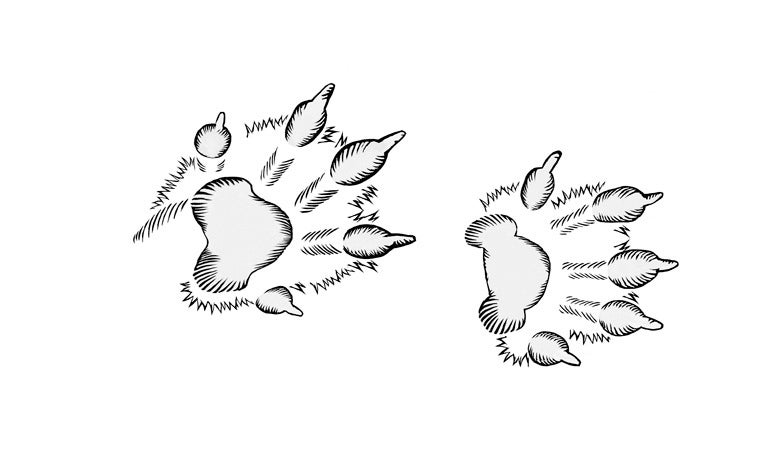
Front track:
- 1 inch long
- 4 or 5 toes might show.
Hind track:
- 1–2 inches long
- 4 or 5 toes might show
- Inner toe sometimes doesn’t leave print.
Other notes:
- Has 5 toes, though only 4 may show.
- Claws and toe pads usually make a combined print.
- Distance between track clusters 10–24 inches (loping).
